Opinion & Analysis
Statistically-based pairings for the U.S. Ryder Cup team
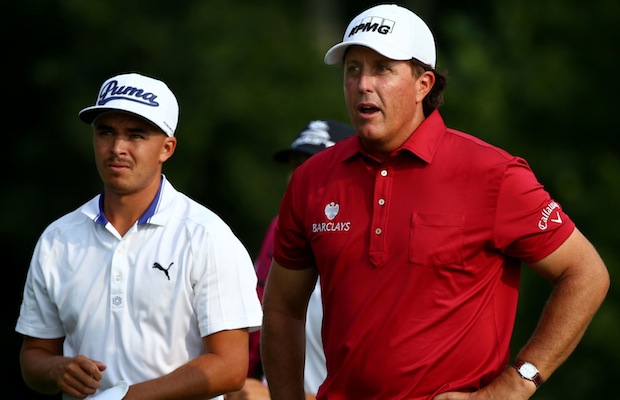
The U.S. Ryder Cup team appears to be — based on popular opinion — the heavy underdog against the Europeans. The U.S. team lost some key members due to Dustin Johnson’s leave of absence and Jason Dufner’s injuries that kept him from qualifying. Also, while Tiger Woods has not been a historically great Ryder Cup player, he is one of the best players in the world and a golfer the U.S. counts on for stability and leadership. His well-documented injuries and poor play, however, leave him sidelined for this year’s Ryder Cup.
On the opposing squad, the Europeans have had quite a strong year despite regressions in the play of two superstar players — Luke Donald (who did not make the team) and Lee Westwood.
Despite the opinion that the Europeans will win, I believe that if the U.S. team pairs players that are more statistically favorable instead of the “these two players are good friends, so we will pair them together” strategy, they have a realistic chance at winning the Ryder Cup. While I do not recall Davis Love III using a statistically-based pairing system, his pairings in 2012 mostly fit in line with what the numbers showed, and the U.S. team had a 10-6 lead going into Sunday. So his pairings were not the reason why the U.S. did not win at Medinah. Rather, the players simply failed to close out the Europeans on Sunday’s single matches.
For reference, here is a table of rankings for each member of the U.S. team in the key metrics for Ryder Cup play. The rankings are based out of 177 players:
General principles for pairing players in each format
Four-Ball Format: This is the ‘best score’ format. Therefore, this is more about scoring ability than ball-striking, short game and putting ability. The par-4 play is most important because there are more par-4’s than there are par-5’s and par-3’s. If the golfer is a poor performer on the par-5’s or par-3’s, then they should be paired with a player that performs well on those particular holes. Also, a high birdie-rate is preferable since the majority of time the team will be able to make at least a par.
Foursomes Format: This is the alternate shot format. Therefore, this is more about meshing together the players’ ball-striking, short game and putting ability. Short Game shots from 10-20 yards and the ability to save par is at a premium here. The foursomes format also tends to favor players that hit a lot of fairways, but that is not always needed if the rest of the players’ games jive well together. For example, a player that may miss a lot of fairways may work perfectly with another player that hits it well on shots from out of the rough.
Below is a brief analysis of each member on the U.S. team.
Keegan Bradley
Strengths: Par-4 play, Par-3 Play, All-Around Game
Weaknesses: Par-5 play, Iron play from 75-175 yards
Suitable Four-ball Partners: Fowler, Kuchar, Simpson, Spieth, Watson and Walker
Suitable Foursome Partners: Mickelson, Spieth and Watson
While Bradley did not win this season, he has the makeup of an excellent Ryder Cup player. What is interesting is that he struggled a bit on the par-5’s this year despite usually being an excellent par-5 player. With that, I would try and put Keegan with high birdie-rate players that play the par-5’s well in the four-ball format. Keegan should be a quality Foursome partner because he drives it very well and has a good short game. If he is a little off with his driving, it’s because he is missing fairways and I would pair him with good players from the rough that don’t make many bogeys.
Rickie Fowler
Strengths: Par-4 play, Par-5 play, Bogey-rate, Birdie Rate, Driving and shots from 10-20 yds
Weaknesses: Hit Fwy %, Shots from the Rough
Suitable Four-ball Partners: Bradley, Kuchar, Mickelson, Simpson, Watson, Walker
Suitable Foursome Partners: Furyk and Mahan
Fowler struggled massively with the putter early on and has made a huge turnaround on the greens since Riviera, so he is riding a hot putter coming into the Ryder Cup and played superbly in the majors this year. The only weaknesses are his play from the rough, and he does not hit a ton of fairways.
He is better in the four-ball format given his scoring metrics so you can pair him with just about anybody there. In the Foursome format, I would lean towards a good player from the rough that finds a lot of fairways so he does not have to hit many shots from the long grass.
Jim Furyk
Strengths: Par-4, Par-5 and Par-3 play. Bogey rate, Hit Fwy %, Iron Play, Short game
Weaknesses: Age and historically a poor Four-ball format player.
Suitable Four-ball Partners: N/A
Suitable Foursome Partners: Kuchar, Zach Johnson, and Simpson.
While Furyk plays the par-4’s, par-5’s and par-3’s superbly, he has historically struggled in the four-ball format because he is not a birdie-maker. Therefore, I would not even consider him in the four-ball format. He is better suited in the foursomes format because he finds fairways, hits greens and makes saves. I think he would be best with a player that also finds a lot of fairways, hits approach shots well from the fairway and is a good putter.
Zach Johnson
Strengths: Par-5 play, 175-225 yard play, Driving, fairway play, Hit Fwy %, Shots from 10-20 yards
Weaknesses: Age, Driving Distance, Shots from Rough
Suitable Four-ball Partners: Kuchar, Mickelson, Simpson, Spieth, Watson and Walker
Suitable Foursome Partners: Furyk, Kuchar, Mahan and Simpson
Johnson is much like Furyk except he is a more suitable player in the four-ball format because he makes more birdies. He is a player that Watson could possibly ride since he fits both formats pretty well. However, his putting has not been as good as people think (79th in Strokes Gained: Putting). So, in the foursomes format I would want to stick him with some good putters that keep the ball in the fairways.
Matt Kuchar
Strengths: Par-4 play, Bogey and Birdie Rates, Driving, Hit Fwy %, Shots from 175-225 yards, Short Game and Putting
Weaknesses: Driving Distance and shots from the rough
Suitable Four-ball Partners: Bradley, Fowler, Zach Johnson, Mahan, Reed, Simpson, Spieth, Watson and Walker
Suitable Foursome Partners: Furyk, Zach Johnson, Mahan and Simpson
Kuchar is more like Zach Johnson in that he fits in nicely in both formats and Tom Watson may want to ride him a bit. He suits almost anybody in the four-ball format. Given his troubles form the rough (130th), I would try and give him partners that find the fairway, strike it well from the fairway and can putt.
Hunter Mahan
Strengths: Par-4 play and Driving
Weaknesses: Par-3 play, Bogey Rate, Birdie Rate, Shots from 175-225 yds, Shots from the Fairway and Shots from 10-20 yards
Suitable Four-ball Partners: Kuchar, Watson and Walker
Suitable Foursome Partners: Fowler, Zach Johnson, Simpson and Spieth
The metrics show why I am not a fan of the Mahan pick. However, he has a decent track record in the Ryder Cup and played fairly well at the Open Championship. Mahan’s game has been highlighted by excellent driving and hamstrung by his inability to hit his irons well. This year he did not play well from 10-20 yards so this makes me a little more averse to putting him in the foursomes format.
I would like to see him with Bubba Watson in the four-ball format and re-create a similar team that Paul Azinger created with Boo Weekley and JB Holmes. Weekley, one of the best drivers in the world that hits the ball long and straight, would tee off first and consistently hit good drives past his opponents. If Weekley was in good position, that allowed Holmes a free rip to hit a drive 380 yards. I could see the same working with Mahan and Bubba.
Phil Mickelson
Strengths: Par-4 play, Bogey and Birdie Rate, Shots from the Rough and shots from 10-20 yards
Weaknesses: Hit Fwy % and Shots from the Fairway
Suitable Four-ball Partners: Fowler, Spieth, Simpson, Watson and Walker
Suitable Foursome Partners: Bradley, Spieth, Watson and Walker
While Mickelson had one of his worst seasons in recent memory, his game is better suited for the Ryder Cup this year than in year’s past. He is still a player best suited for the four-ball format because he plays all of the holes well and makes a lot of birdies. I know there will be the temptation to place him and Bradley together in the four-ball format. It is not a bad idea, but the numbers indicate that other players like Fowler and Watson would be better suited in the four-ball format.
In the foursomes format, Mickelson’s driving has improved enough that he is not a burden to his partner off the tee. However, that partner will still need to be able to hit it well from the rough as Phil does not find many fairways. I would pair him with good overall drivers of the ball that hit the irons well, particularly from the rough.
Patrick Reed
Strengths: Streaky fantastic play, great past record in match play.
Weaknesses: Streaky poor play, Driving, Hit Fwy %, Shots from the rough and shots from 10-20 yds
Suitable Four-ball Partners: Kuchar, Spieth and Walker
Suitable Foursome Partners: n/a
Reed is an extremely streaky player. His metrics are not very impressive, but what I have recorded is that when he is on, he is as good as he thinks he is. And when he is off, he shuts down and calls it a week.
I would steer clear of putting him in the foursomes format because he is not very accurate off the tee and he is not very good with the Short Game. I think the streaky player likely works best in the four-ball format where they can kind of do their own thing.
Webb Simpson
Strengths: Par-4 play, Birdie Rate, Shots from the Fairway, Shots from 10-20 yards, putting
Weaknesses: Shots from 175-225 yards, Shots from the rough
Suitable Four-ball Partners: Bradley, Fowler, Johnson, Kuchar, Mahan, Mickelson, Spieth, Watson and Walker
Suitable Foursome Partners: Furyk, Kuchar and Johnson.
Simpson was a bit of a controversial pick and I can understand why. He is best suited for the four-ball format, but has struggled to avoid Bogeys. He has some good metrics for the foursomes format, but has massively struggled on shots from 175-225 yards and shots from the rough. I think the obvious choice in the four-ball format is to stick him with Bubba Watson, which worked well in 2010. I would recommend using Simpson in the foursomes format in a pinch, but find a player that hits a lot of fairways and can get up-and-down for when Simpson misses the green.
Jordan Spieth
Strengths: Par-3, Par-4 and Par-5 play. Birdie Rate and Putting
Weaknesses: Hit Fairway %
Suitable Four-ball Partners: Bradley, Kuchar, Johnson, Mickelson, Reed, Simpson, Watson and Walker
Suitable Foursome Partners: Bradley, Mahan, Mickelson, Watson and Walker
Jordan should be a player that is suitable in both formats. He is better off in the four-ball format, but in the foursomes format they should try and protect against his occasional driving woes and find a player that strikes it well off the tee and can hit it well from the rough if Jordan misses the fairway.
Bubba Watson
Strengths: Par-4’s, Par-5’s, Birdie and Bogey Rates, Driving, Distance, Shots from the fwy, Shots from the rough,
Weaknesses: Hit Fairway %, Shots from 10-20 yards, Putting
Suitable Four-ball Partners: Bradley, Furyk, Johnson, Kuchar, Mickelson, Spieth and Walker
Suitable Foursome Partners: Bradley, Mickelson, Spieth and Walker
Watson is better suited in the four-ball format where he pretty much fits well with just about every player on the team. The only question mark is that historically Watson has been a poor player on the par-3’s. He has done a good job on the par-3’s this year (57th), but I would still be guarded against that and seek out the players that are strong on those holes.
In the foursomes format, the main emphasis should be on putting and short game play along with shots from the rough. He is actually more accurate off the tee than most people give credit for, but when he misses he tends to miss big and you need a player that can recover from those shots.
Jimmy Walker
Strengths: Par-3, Par-4, Par-5 play, Birdie and Bogey Rates, Shots from 175-225 yards, Shots from the Rough and Putting
Weaknesses: Driving and Hit Fairway %
Suitable Four-ball Partners: All players
Suitable Foursome Partners: Mickelson, Spieth and Watson
Walker looks to be a great fit in the four-ball format. He is like a poor man’s Mickelson — an ineffective driver of the ball due to his inaccuracy off the tee, but he hits it a long way and is a great iron player with a good short game and putts very well. In the foursomes format I would pair him with players that are good from the rough, but he is much better suited for the four-ball format.
The U.S. teams have traditionally been very well-suited in the four-ball format. This team is no different as most of the members of the team appear to be quite strong in that format. However, the foursomes format has given them issues and this is a team that is very suspect in this format. Therefore, I feel that Captain Tom Watson should likely focus most of his efforts on the alternate shot format and if the U.S. team can break even in that format, they stand a good chance of winning.
My recommendations for the Friday pairings for Team USA
Foursomes Format
Bradley/Mickelson
Furyk/Spieth
Walker/Watson
Johnson/Kuchar
Four-Ball Format
Mahan/Bubba
Reed/Walker
Fowler/Bradley
Spieth/Kuchar
Opinion & Analysis
The 2 primary challenges golf equipment companies face

As the editor-in-chief of this website and an observer of the GolfWRX forums and other online golf equipment discourse for over a decade, I’m pretty well attuned to the grunts and grumbles of a significant portion of the golf equipment purchasing spectrum. And before you accuse me of lording above all in some digital ivory tower, I’d like to offer that I worked at golf courses (public and private) for years prior to picking up my pen, so I’m well-versed in the non-degenerate golf equipment consumers out there. I touched (green)grass (retail)!
Complaints about the ills of and related to the OEMs usually follow some version of: Product cycles are too short for real innovation, tour equipment isn’t the same as retail (which is largely not true, by the way), too much is invested in marketing and not enough in R&D, top staffer X hasn’t even put the new driver in play, so it’s obviously not superior to the previous generation, prices are too high, and on and on.
Without digging into the merits of any of these claims, which I believe are mostly red herrings, I’d like to bring into view of our rangefinder what I believe to be the two primary difficulties golf equipment companies face.
One: As Terry Koehler, back when he was the CEO of Ben Hogan, told me at the time of the Ft Worth irons launch, if you can’t regularly hit the golf ball in a coin-sized area in the middle of the face, there’s not a ton that iron technology can do for you. Now, this is less true now with respect to irons than when he said it, and is less and less true by degrees as the clubs get larger (utilities, fairways, hybrids, drivers), but there remains a great deal of golf equipment truth in that statement. Think about it — which is to say, in TL;DR fashion, get lessons from a qualified instructor who will teach you about the fundamentals of repeatable impact and how the golf swing works, not just offer band-aid fixes. If you can’t repeatably deliver the golf club to the golf ball in something resembling the manner it was designed for, how can you expect to be getting the most out of the club — put another way, the maximum value from your investment?
Similarly, game improvement equipment can only improve your game if you game it. In other words, get fit for the clubs you ought to be playing rather than filling the bag with the ones you wish you could hit or used to be able to hit. Of course, don’t do this if you don’t care about performance and just want to hit a forged blade while playing off an 18 handicap. That’s absolutely fine. There were plenty of members in clubs back in the day playing Hogan Apex or Mizuno MP-32 irons who had no business doing so from a ballstriking standpoint, but they enjoyed their look, feel, and complementary qualities to their Gatsby hats and cashmere sweaters. Do what brings you a measure of joy in this maddening game.
Now, the second issue. This is not a plea for non-conforming equipment; rather, it is a statement of fact. USGA/R&A limits on every facet of golf equipment are detrimental to golf equipment manufacturers. Sure, you know this, but do you think about it as it applies to almost every element of equipment? A 500cc driver would be inherently more forgiving than a 460cc, as one with a COR measurement in excess of 0.83. 50-inch shafts. Box grooves. And on and on.
Would fewer regulations be objectively bad for the game? Would this erode its soul? Fortunately, that’s beside the point of this exercise, which is merely to point out the facts. The fact, in this case, is that equipment restrictions and regulations are the slaughterbench of an abundance of innovation in the golf equipment space. Is this for the best? Well, now I’ve asked the question twice and might as well give a partial response, I guess my answer to that would be, “It depends on what type of golf you’re playing and who you’re playing it with.”
For my part, I don’t mind embarrassing myself with vintage blades and persimmons chasing after the quasi-spiritual elevation of a well-struck shot, but that’s just me. Plenty of folks don’t give a damn if their grooves are conforming. Plenty of folks think the folks in Liberty Corner ought to add a prison to the museum for such offences. And those are just a few of the considerations for the amateur game — which doesn’t get inside the gallery ropes of the pro game…
Different strokes in the game of golf, in my humble opinion.
Anyway, I believe equipment company engineers are genuinely trying to build better equipment year over year. The marketing departments are trying to find ways to make this equipment appeal to the broadest segment of the golf market possible. All of this against (1) the backdrop of — at least for now — firm product cycles. And golfers who, with their ~15 average handicap (men), for the most part, are not striping the golf ball like Tiger in his prime and seem to have less and less time year over year to practice and improve. (2) Regulations that massively restrict what they’re able to do…
That’s the landscape as I see it and the real headwinds for golf equipment companies. No doubt, there’s more I haven’t considered, but I think the previous is a better — and better faith — point of departure when formulating any serious commentary on the golf equipment world than some of the more cynical and conspiratorial takes I hear.
Agree? Disagree? Think I’m worthy of an Adam Hadwin-esque security guard tackle? Let me know in the comments.
@golfoncbs The infamous Adam Hadwin tackle ? #golf #fyp #canada #pgatour #adamhadwin ? Ghibli-style nostalgic waltz – MaSssuguMusic
Podcasts
Fore Love of Golf: Introducing a new club concept

Episode #16 brings us Cliff McKinney. Cliff is the founder of Old Charlie Golf Club, a new club, and concept, to be built in the Florida panhandle. The model is quite interesting and aims to make great, private golf more affordable. We hope you enjoy the show!
Opinion & Analysis
On Scottie Scheffler wondering ‘What’s the point of winning?’

Last week, I came across a reel from BBC Sport on Instagram featuring Scottie Scheffler speaking to the media ahead of The Open at Royal Portrush. In it, he shared that he often wonders what the point is of wanting to win tournaments so badly — especially when he knows, deep down, that it doesn’t lead to a truly fulfilling life.
View this post on Instagram
“Is it great to be able to win tournaments and to accomplish the things I have in the game of golf? Yeah, it brings tears to my eyes just to think about it because I’ve literally worked my entire life to be good at this sport,” Scheffler said. “To have that kind of sense of accomplishment, I think, is a pretty cool feeling. To get to live out your dreams is very special, but at the end of the day, I’m not out here to inspire the next generation of golfers. I’m not out here to inspire someone to be the best player in the world, because what’s the point?”
Ironically — or perhaps perfectly — he went on to win the claret jug.
That question — what’s the point of winning? — cuts straight to the heart of the human journey.
As someone who’s spent over two decades in the trenches of professional golf, and in deep study of the mental, emotional, and spiritual dimensions of the game, I see Scottie’s inner conflict as a sign of soul evolution in motion.
I came to golf late. I wasn’t a junior standout or college All-American. At 27, I left a steady corporate job to see if I could be on the PGA Tour starting as a 14-handicap, average-length hitter. Over the years, my journey has been defined less by trophies and more by the relentless effort to navigate the deeply inequitable and gated system of professional golf — an effort that ultimately turned inward and helped me evolve as both a golfer and a person.
One perspective that helped me make sense of this inner dissonance around competition and our culture’s tendency to overvalue winning is the idea of soul evolution.
The University of Virginia’s Division of Perceptual Studies has done extensive research on reincarnation, and Netflix’s Surviving Death (Episode 6) explores the topic, too. Whether you take it literally or metaphorically, the idea that we’re on a long arc of growth — from beginner to sage elder — offers a profound perspective.
If you accept the premise literally, then terms like “young soul” and “old soul” start to hold meaning. However, even if we set the word “soul” aside, it’s easy to see that different levels of life experience produce different worldviews.
Newer souls — or people in earlier stages of their development — may be curious and kind but still lack discernment or depth. There is a naivety, and they don’t yet question as deeply, tending to see things in black and white, partly because certainty feels safer than confronting the unknown.
As we gain more experience, we begin to experiment. We test limits. We chase extreme external goals — sometimes at the expense of health, relationships, or inner peace — still operating from hunger, ambition, and the fragility of the ego.
It’s a necessary stage, but often a turbulent and unfulfilling one.
David Duval fell off the map after reaching World No. 1. Bubba Watson had his own “Is this it?” moment with his caddie, Ted Scott, after winning the Masters.
In Aaron Rodgers: Enigma, reflecting on his 2011 Super Bowl win, Rodgers said:
“Now I’ve accomplished the only thing that I really, really wanted to do in my life. Now what? I was like, ‘Did I aim at the wrong thing? Did I spend too much time thinking about stuff that ultimately doesn’t give you true happiness?’”
Jim Carrey once said, “I think everybody should get rich and famous and do everything they ever dreamed of so they can see that it’s not the answer.”
Eventually, though, something shifts.
We begin to see in shades of gray. Winning, dominating, accumulating—these pursuits lose their shine. The rewards feel more fleeting. Living in a constant state of fight-or-flight makes us feel alive, yes, but not happy and joyful.
Compassion begins to replace ambition. Love, presence, and gratitude become more fulfilling than status, profits, or trophies. We crave balance over burnout. Collaboration over competition. Meaning over metrics.
Interestingly, if we zoom out, we can apply this same model to nations and cultures. Countries, like people, have a collective “soul stage” made up of the individuals within them.
Take the United States, for example. I’d place it as a mid-level soul: highly competitive and deeply driven, but still learning emotional maturity. Still uncomfortable with nuance. Still believing that more is always better. Despite its global wins, the U.S. currently ranks just 23rd in happiness (as of 2025). You might liken it to a gifted teenager—bold, eager, and ambitious, but angsty and still figuring out how to live well and in balance. As much as a parent wants to protect their child, sometimes the child has to make their own mistakes to truly grow.
So when Scottie Scheffler wonders what the point of winning is, I don’t see someone losing strength.
I see someone evolving.
He’s beginning to look beyond the leaderboard. Beyond metrics of success that carry a lower vibration. And yet, in a poetic twist, Scheffler did go on to win The Open. But that only reinforces the point: even at the pinnacle, the question remains. And if more of us in the golf and sports world — and in U.S. culture at large — started asking similar questions, we might discover that the more meaningful trophy isn’t about accumulating or beating others at all costs.
It’s about awakening and evolving to something more than winning could ever promise.









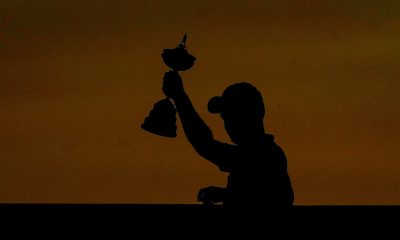



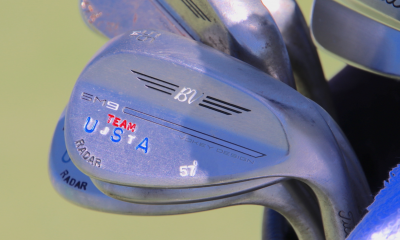

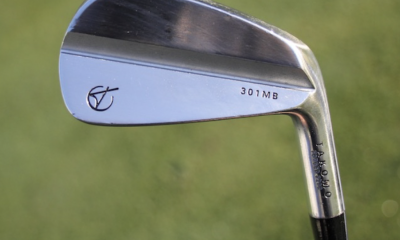

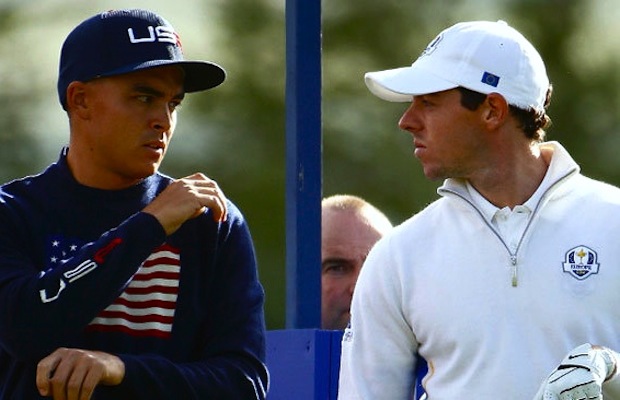
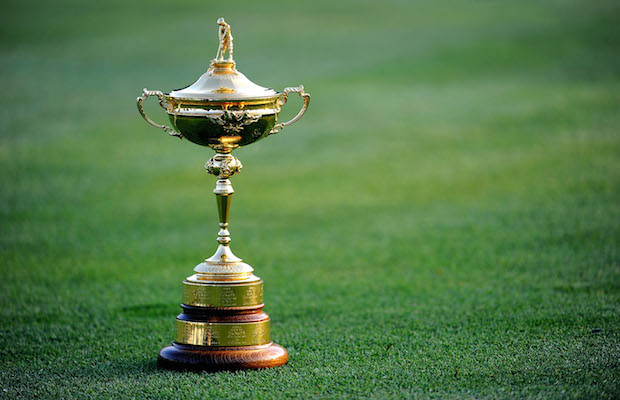








Pingback: ¿Cómo se confeccionan las parejas de la Ryder Cup? - Golf76.com
Greg Palmer
Sep 24, 2014 at 8:27 am
I think metrics have become an important component to every sport, golf included, but by design, what they don’t take into account are the emotional nuances which are also critical elements – especially at events like this. The “statistical” approach alone has never produced a championship of any kind that I can remember. Clearly, champions produce mostly great statistics –
If I were managing the pairings, I would be looking for a combination of statistics, guts for the moment, past records and experience to a point, and the ability to deliver on the big day. Obviously, being hot right now is a good thing too!
Currently, the hottest players on the fall playoff list – a list in which Americans have 8 of the top 10 players – feature 6 American Ryder Cuppers. The top 2, Horschel and Kirk are out. That leaves in order 4-9: Furyk, Watson, Mahan, Walker, Kuchar, and Fowler. Spieth was not far behind, Simpson and Zach Johnson also were right there.
Patrick Reed is the wildcard. He’s cocky and very streaky which might play out well in this format.
Mickelson and Bradley are known commodities, 3-0-1 in 4somes and 2-1 in 4ball, and should be used together as long as they are competitive in these matches. If healthy and feeling good, they are a must play in every team match (3 of 4 for sure).
Furyk scares me because his Ryder Cup record is awful! He is a gritty and tough grinder and I would be looking to pair him with another hot golfer out of the gate in foursomes – maybe even a rookie to bring some energy/spark to his play. He is 1-8-1 in fourball at the Ryder Cup, and therefore, he would not play one fourball match for me all weekend.
In terms of matchups, I want Mickelson or Fowler going up against Rory at every possible team match. I might even throw Bubba in there for length at times, but Mickelson and Fowler played on the big stage this summer with Rory and if not for a couple of errors, either could have won a major – and Fowler multiple. To me, Fowler is the horse for the Americans in these matches – a must-play in all 5 games.
For Friday, if I’m trying to win and combine what I know about metrics and guts, I’m going with:
Foursomes
Bradley/Mickelson
Fowler/Spieth or Mahan
Walker/Furyk
Watson/Kuchar
Four-Ball Format on Friday afternoon – I want Fowler, Mickelson and Watson anchoring a team each. All can make birdies like crazy and that is what I want in this format. I would be making my afternoon pairings based on morning performance. Rotating out the guys who are average and keep in the guys who are hot. Hardly a rocket science idea.
Possible Pairings:
Fowler/Reed
Watson/Mahan or Spieth depending on how the morning went
Mickelson/Bradley or Simpson
Walker/Johnson
One of the real wildcards in these matches will be Tom Watson. He has become even more stubborn with age and I am not confident in his ability to make adjustments on the fly. We’ll see how it plays out, but I sort of like the idea of being underdog – could play out well.
Greg Palmer
Sep 29, 2014 at 9:59 am
Just looking back, the US Team faced a huge uphill battle to win these matches, but the Captain did not do them any favors. Past Captains felt that Mickelson’s comments were out of line, but he is probably mostly right about what he said.
Watson did not make sound adjustments either day during the afternoon matches. The hottest team on the entire golf course dispatched their European opponents in 14 holes in the morning on Friday, and at ages 21 and 25, sat the afternoon. This was a very strong indicator that Watson was completely out of touch.
And then to sit Mickelson for the entire day on Saturday made no sense after he played twice and went 1-1 on Friday.
The coach never put these guys into position to win. Not that they could have anyway, but he did not nothing to help the cause.
Finally, Bubba Watson showed once again why he can’t be relied on in these matches.
Todd Barnes
Sep 24, 2014 at 2:19 am
Or a Zach Johnson/ Kuchar pairing instead of Fowler from a statistical view but Rickys swing changes seem to have taken hold and his numbers the last couple of months off the tee are much better than at the start of the season. Thanks Rich.
Richie Hunt
Sep 24, 2014 at 11:11 am
Fowler hasn’t had many issues off the tee this year to begin with. What was plaguing him was his putting was atrocious early on (worst on Tour in Strokes Gained – Putting). He then turned it around.
I don’t think he is a bad player for the 4-some format. But, he doesn’t hit a lot of fairways, he’s only decent from 175-225 yards and is below average on shots from the rough. So, you will need to pair him with a partner that hits a lot of fairways, hits it well from the rough and has a really good short game in case Fowler misses from 175-225 yards.
If you look at the history of the event, you’re better off trying to get as many golfers out playing on Friday as possible. My pairings have all but 1 player playing the first day (Webb Simpson). That way you’re not burning out players, the players are not coming off the bench cold and Tom Watson can get a better feel for who is playing well and who is not and then plan accordingly for Saturday.
Todd Barnes
Sep 24, 2014 at 12:55 pm
That makes sense Rich, I’m just terrified of which Phil will show up for a foursomes match day 1. Hopefully Bradley/Mickelson will pick up where they left off from Medinah. What if you did a Bradley/ Mahan foursome and a Mickelson/ Watson fourball for day 1 and left the rest of your pairings alone?
truth
Sep 23, 2014 at 11:21 pm
fowler needs to play in every match everyday for usa to have a chance. None of the people you have playing twice on friday should be unless you want usa to be in a big hole after the first day
Richie Hunt
Sep 24, 2014 at 11:07 am
Difficult to not have several golfers playing in both matches on Friday because of how the Ryder Cup is set up. And if you look at the history of the Ryder Cup, usually the team that stockpiles their players on Friday, falter on Saturday and Sunday. It burns out those players that played and the apparently the players that have to play end up ‘coming off the bench’ cold.
Not sure why Fowler has to play every match. It’s very arguable that he is even the best player on the team. And he has had a less than stellar Ryder Cup record.
Philip
Sep 23, 2014 at 8:17 pm
Very interesting, I like how you lined up the stats. Of course, the final deciding factor would be whether they gel with each other, but the stats are definitely a good start.
What was the thing about age as a weakness for only Zach and Jim?
ally smith
Sep 23, 2014 at 7:27 pm
Great read, Hope the boys do well and put a good show. Either way i know i’ll enjoy this week end. Great writing Rich, always appreciate your work.
Cheers !!!
TR1PTIK
Sep 23, 2014 at 6:46 pm
Interesting that you list “age” as a weakness for Jim Furyk and Zach Johnson, but not Phil Mickleson. Nor do you list age as a strength for any of the younger players – not sure what age has to do with anything anyway. I stopped reading as soon as I got to that point. Maybe you can find something else to write about like knitting or something.
Richie Hunt
Sep 23, 2014 at 7:43 pm
Mickelson and age was a simple oversight when I looked at weaknesses. But, I fully believe that is an issue since he dropped out of 4-some match on Saturday at Medinah and has had some injury issues this season.
As far as it being a ‘strength’ for younger players, I just don’t think that youth can actually be a strength. It’s a nice benefit if the player starts out on fire because you can use them for the rest of the event. But, if they are playing lousy…youth is not going to change that.
TR1PTIK
Sep 24, 2014 at 6:19 am
I get what you’re saying, but still don’t see what age has to do with anything. Mickleson has a well-known arthritic condition, and Matt Kuchar has had issues with his back this season. Furyk and Johnson? Nothing that I’ve heard of this season. I guess you could argue that they could fatigue faster or something, but then again, the world no. 1 Rory McIlroy used fatigue to brush off his poor play in the playoffs. Bottom line, age isn’t a good reason to discredit someone when you’re talking golf. All of this coming from a 27 year old by the way…
Mark Davis
Sep 23, 2014 at 5:55 pm
Thanks so much for this excellent breakdown going into the Cup. No doubt many will argue but it’s great to read an analysis from which we can start our own pondering… especially if, like me, you’re weak on stats and ares going with much more informal evaluations of the players.
It’s Ryder Cup. Anybody can rise, anybody can fall, anything can happen.
John
Sep 23, 2014 at 4:59 pm
C’mon… We wanna win this damn thing. Here we go:
Foursomes
Bradley/Mickelson
Speith/Fowler
Mahan/Furyk
Watson/Simpson
Fourball
Bradley/Mickelson
Watson/Mahan
Fowler/Johnson
Speith/Simpson
Now I’ll accept a rebuttal…
Richie Hunt
Sep 23, 2014 at 5:37 pm
One of the issues is that you only have 10 different players on day 1. We have to be leery of burning out our players and having them get ‘cold’ by having to wait until Saturday to play. Reed is a good example because he is not suited for the 4-some format. So if he doesn’t play on Friday, he’ll have to wait until Saturday afternoon to finally play. I only left out 1 player (Simpson), but he was a captain’s pick and has the experience to wait a little. And I can use him in the 4-some format if necessary.
Mickelson and Bradley in the 4-ball format I’m a bit averse to because Keegan hasn’t played the par-5’s well this year and Mickelson has been decent. I would rather go with what I feel are stronger pairings and also give Phil some rest for the 4-some format with Keegan for Saturday if possible.
I don’t think your pairings are bad by any means and if Watson were to go that route I think it’s not a bad job of pairing players, but I do think there are some better teams out there statistically that go beyond the ‘big names.’ I am also curious on how well Reed performs because I could see him getting out on Friday and dominating and then we can ride him on Saturday.
Todd Barnes
Sep 24, 2014 at 1:24 am
Hey Rich, love your moneyball approach as I believe that the USA won’t win until they start getting the RIGHT players, not the best players. 1980 USA hockey should be a lesson but the USA hasn’t seemed to learn it yet. Anyways, my question is why did you put Mickelsons/ Bradley in fours some? Mickelson and Bradley are both so streaky off the tee but can make tons of birdies in the four ball matches which you didn’t put them in so I am wondering why. Also I would put Kuchar/Fowler in foursomes because they both drive and putt really well, and move Mickelson/ Bradley to fourbball to light up Europe. Now I would like to know why my idea is bad. Thanks again love your articles.
Todd Barnes
Sep 24, 2014 at 2:25 am
Or a Zach Johnson/ Kuchar pairing for foursomes instead of Fowler/Kuchar but from a statistical view but Rickys swing changes seem to have taken hold and his numbers the last couple of months off the tee are much better than at the start of the season. Thanks Rich.